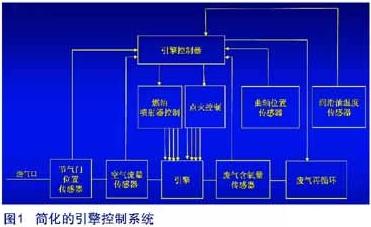On the application of digital signal controller in automobile design
The design of automobiles has gone a long way from simple mechanical systems in the past to modern automobiles that often include up to 100 microprocessors. The parts of electronic devices used in traditional cars are only those entertainment facilities, the most common is car radios. It was not until the introduction of government regulations on various aspects of automobile performance, such as exhaust emissions and fuel efficiency, that electronic control of automobile functions began to become more and more common. Initially, some functions were performed by discrete hardware components or digital logic. With the emergence of embedded processor solutions such as single chip microcomputers (MCUs), the benefits of using MCUs instead of fixed hardware are gradually emerging, because designers can program MCUs to perform specific tasks required by the module. Various MCUs are widely used in automotive design, from the simplest 8-bit MCU used for functions such as rotating windshield wipers and door opening to the complex 32-bit MCU that controls the engine. In the middle of this range are a large number of 16-bit MCUs, which themselves also exhibit considerable diversity in terms of computing power, storage capacity, power consumption, and peripheral characteristics. Choosing the right processor for each independent automotive subsystem and allocating processing power among different subsystems reasonably plays a vital role in the performance, reliability and enhanced functions of automotive products.
Digital signal controller: a leader in the field of microcontrollers and digital signal processors
Most car control and monitoring operations require a lot of mathematical operations. For example, during the engine warm-up phase, the output data of the air flow (MAF) sensor and the engine tachometer (represented in revolutions per minute (RPM)) will be sampled by the MCU, and then the required injection needs to be calculated based on the measured value The fuel quantity of each cylinder is as follows:
F = MAF / (K * N * RPM / 120)
Where K is the ideal (constant) air-fuel ratio at a given lubricant temperature, and N is the number of cylinders.
The above calculations not only involve accurate multiplication and division, but also must repeatedly calculate the amount of fuel to be injected to adapt to rapidly changing engine operating conditions. Therefore, when the exhaust gas oxygen content (EGO) sensor has been sufficiently warmed up to measure the quality of the exhaust gas, the output data of the EGO sensor must be continuously monitored to adjust the fuel injection rate to obtain the best engine performance and reduce exhaust gas emissions the amount.
Other examples of computationally intensive operations are:
a) Filter the data from various sensors with finite impulse response (FIR) or infinite impulse response (IIR) to eliminate noise. Application examples: Engine knock detection, flameout detection or eliminating the effects of fuel sloshing while continuously monitoring the fuel level.
b) Perform a Fast Fourier Transform (FFT) to analyze the data to use the spectrum in subsequent processing stages. Application example: Active vibration control or exhaust noise elimination.
c) According to the magnitude of the sensor input data, it is calibrated, and normalized and linearized.
d) Proportional-integral (PI) or proportional-integral-derivative (PID) control algorithm. Application example: navigation control.
Figure 1 depicts a simplified engine control system, which itself is part of the tasks performed by various processors in the car.

Comfort, diagnosis and safety functions such as cabin noise cancellation, engine knock detection, anti-rollover and stability control all require stronger signal processing capabilities, which requires the use of mathematically intensive algorithms such as adaptive filtering.
Die-Casting Products,Led Housing Die Casting,Aluminum Die Casting Product,Aluminum Die Casting Led
Yangzhou Huadong Can Illuminations Mould Manufactory Co., Ltd. , https://www.light-reflectors.com